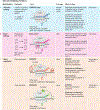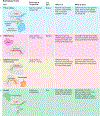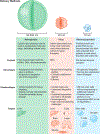The promise and challenge of therapeutic genome editing
- PMID: 32051598
- PMCID: PMC8992613
- DOI: 10.1038/s41586-020-1978-5
The promise and challenge of therapeutic genome editing
Abstract
Genome editing, which involves the precise manipulation of cellular DNA sequences to alter cell fates and organism traits, has the potential to both improve our understanding of human genetics and cure genetic disease. Here I discuss the scientific, technical and ethical aspects of using CRISPR (clustered regularly interspaced short palindromic repeats) technology for therapeutic applications in humans, focusing on specific examples that highlight both opportunities and challenges. Genome editing is-or will soon be-in the clinic for several diseases, with more applications under development. The rapid pace of the field demands active efforts to ensure that this breakthrough technology is used responsibly to treat, cure and prevent genetic disease.
References
-
-
Jinek M, Chylinski K, Fonfara I, Hauer M, Doudna JA & Charpentier E. A programmable dual-RNA-guided DNA endonuclease in adaptive bacterial immunity. Science 337, 816–821 (2012).
*This study showed how CRISPR-Cas9 uses a dual RNA guide to bind and cut DNA, and described the composition of Cas9 with single-guide RNAs that can direct DNA nicking or cutting in ways suitable for genome editing. The results provided a road map for labs exploring mechanisms of genome editing to deploy CRISPR-Cas9 in this capacity.
-
-
- Cho SW, Kim S, Kim JM & Kim J-S Targeted genome engineering in human cells with the Cas9 RNA-guided endonuclease. Nat. Biotechnol 31, 230–232 (2013). - PubMed
Publication types
MeSH terms
Substances
Grants and funding
LinkOut - more resources
Full Text Sources
Other Literature Sources
Medical






